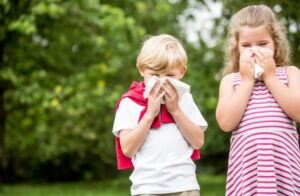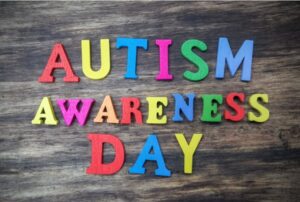Autumn is a season when children are more susceptible to illnesses, due to climate changes, crowded school environments, and the maturity of their immune systems. Parents should take preventive measures in advance. The four most common illnesses in children during this season are: gastroenteritis, influenza, hand, foot, and mouth disease, and bronchitis.
Gastroenteritis: Digestive Tract Infections Caused by Viruses and Bacteria
Gastroenteritis is a common acute digestive tract infection in children, usually caused by viruses or bacteria. Common causative viruses include rotavirus and norovirus, while bacterial gastroenteritis is often caused by Salmonella and E. coli. The incidence of viral gastroenteritis increases in autumn as temperatures drop.
Symptoms:
- Diarrhea: Increased frequency of bowel movements with thin, watery stools, often accompanied by a foul odor.
- Vomiting: An early sign of gastroenteritis, lasting several days.
- Fever: Viral infections typically cause mild to moderate fever (38°C - 39°C), while bacterial infections may cause higher fever.
- Dehydration: Due to frequent vomiting and diarrhea, children are at risk of dehydration, which may present as dry lips, reduced urine output, and loss of skin elasticity.
Gastroenteritis Prevention and Management:
- Hand Hygiene: Since viruses are often transmitted orally, frequent hand washing is crucial.
- Disinfection: Regularly disinfect shared toys and utensils to prevent cross-contamination.
- Rehydration: If dehydration symptoms occur, promptly administer oral rehydration salts (ORS) or diluted sports drinks. Severe dehydration requires intravenous fluid treatment at a hospital.
- Diet Adjustment: Avoid greasy foods and opt for bland, easily digestible foods like rice porridge, plain rice, and toasted bread.
Seasonal Influenza: Highly Contagious Respiratory Illness
Influenza is a highly contagious respiratory viral infection common in the autumn and winter. The influenza virus changes annually, so updated flu vaccines are required each year.
Symptoms:
- Fever: Sudden high fever (39°C - 40°C) usually lasting 2-4 days.
- Cough and Sore Throat: Dry cough and throat irritation.
- Muscle Aches: Significant muscle pain, especially in limbs and back.
- Extreme Fatigue: Unlike a common cold, influenza causes extreme tiredness affecting normal activities.
Prevention and Management:
- Vaccination: Annual flu vaccination is an effective method to prevent influenza, recommended for children aged 6 months and older.
- Avoiding Contact: Prevent interaction with people who are infected with influenza.
- Rest: Adequate rest helps recovery. Most mild flu cases resolve on their own, while severe cases may require antiviral medications such as oseltamivir (Tamiflu).
Hand, Foot, and Mouth Disease: Highly Contagious Enteroviral Infection
Hand, foot, and mouth disease is primarily caused by Coxsackievirus or enterovirus 71, and is common in young children, especially in daycare centers and preschools.
- Oral Ulcers: Small blisters or ulcers in the mouth, causing pain and affecting eating.
- Rash: Red spots or blisters on the palms, soles, and buttocks.
- Fever: Moderate fever (38°C - 39°C) lasting 1-2 days.
- Potential Complications: Severe cases may lead to meningitis or encephalitis.
- Personal Hygiene: Frequent hand washing and maintaining cleanliness of toys, bottles, and utensils.
- Avoid Crowded Places: Avoid taking children to crowded areas during outbreaks.
- Treatment: Most cases are self-limiting, with symptomatic treatment including rehydration and pain relievers (such as acetaminophen). Severe cases require close monitoring to prevent complications.
Bronchitis: A Common Respiratory Infection in Autumn
Bronchitis is a common respiratory illness in children during autumn, typically caused by viruses or bacteria, with airborne dust, pollen, and other allergens potentially triggering symptoms.
Symptoms:
- Cough: Persistent dry cough, which may last for several weeks.
- Excessive Mucus: Sometimes accompanied by large amounts of mucus, especially in bacterial infections.
- Breathing Difficulties: Severe cases may present with wheezing and shortness of breath.
Prevention and Management:
- Warmth: Adjust clothing to maintain warmth and prevent respiratory infections.
- Improving Living Environment: Keep indoor air clean and avoid exposure to smoke, dust, and other irritants.
- Nutrition: Consume vitamin-rich foods to boost immunity.
Parents should tailor preventive and response measures according to their child's specific condition, promptly recognizing and addressing symptoms, and seeking appropriate medical advice and treatment.













